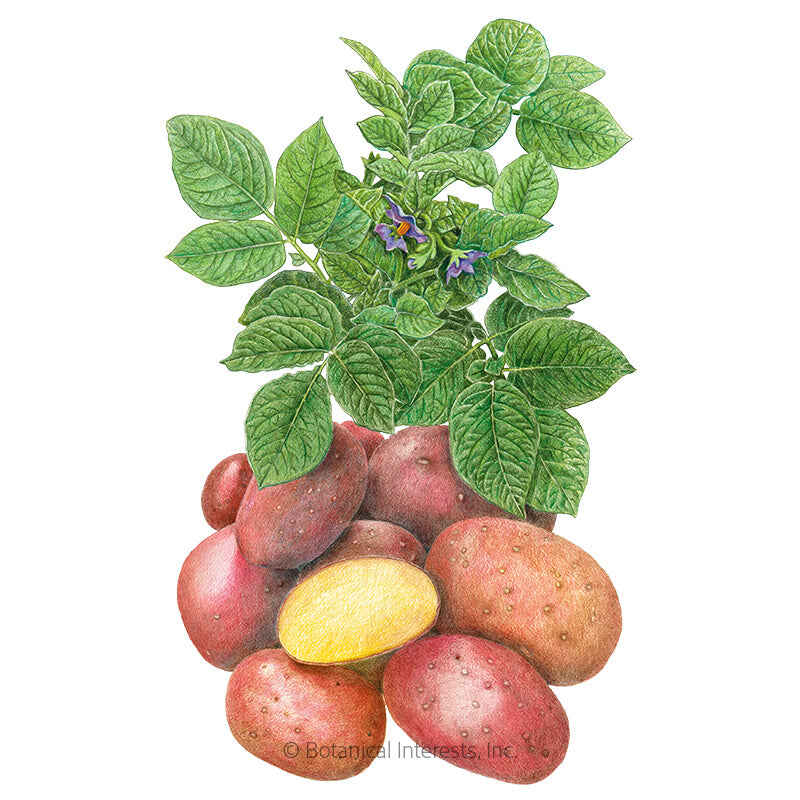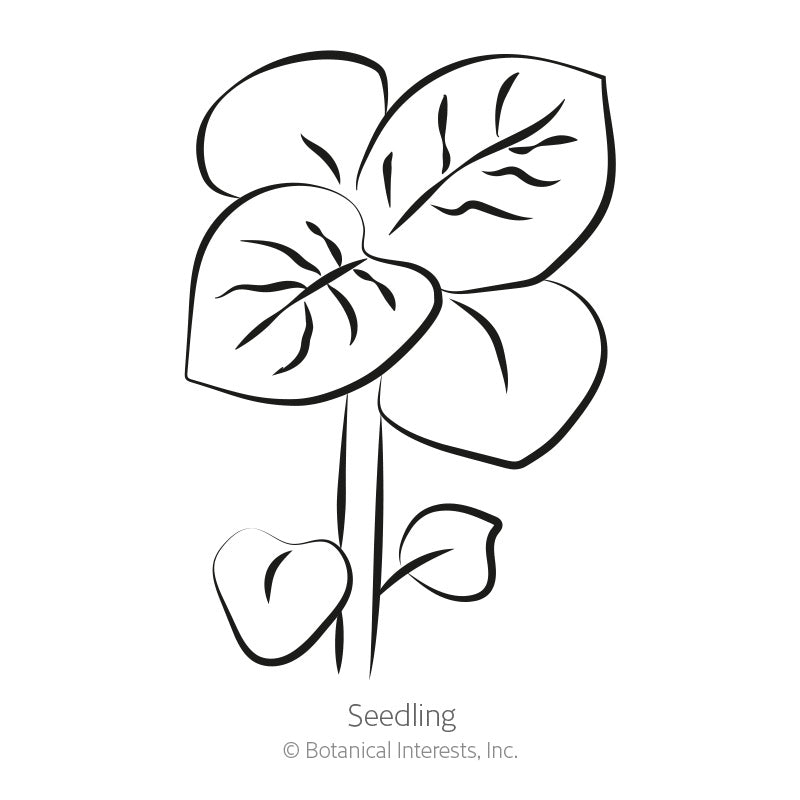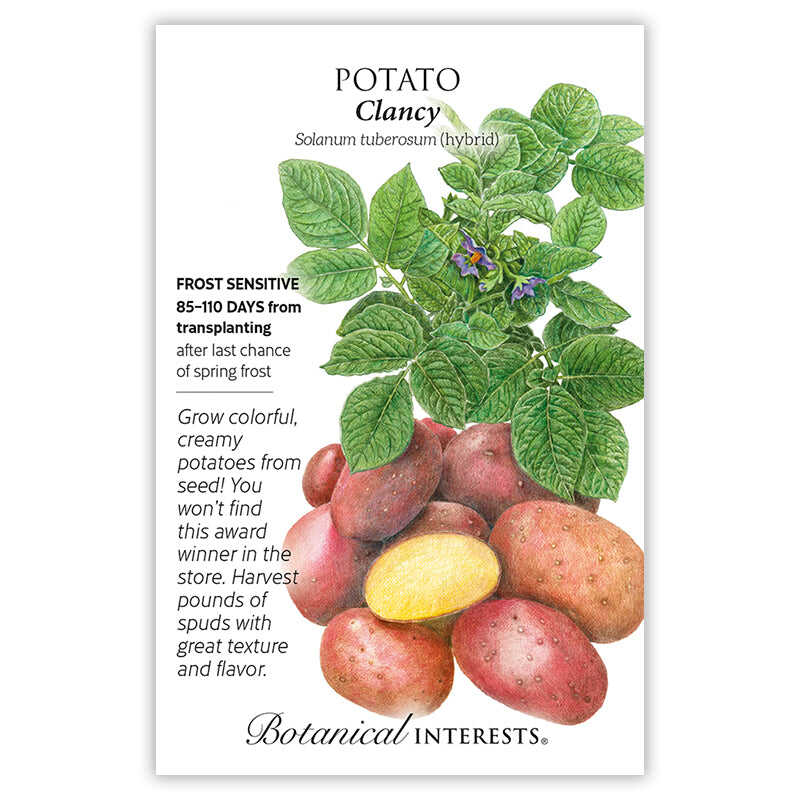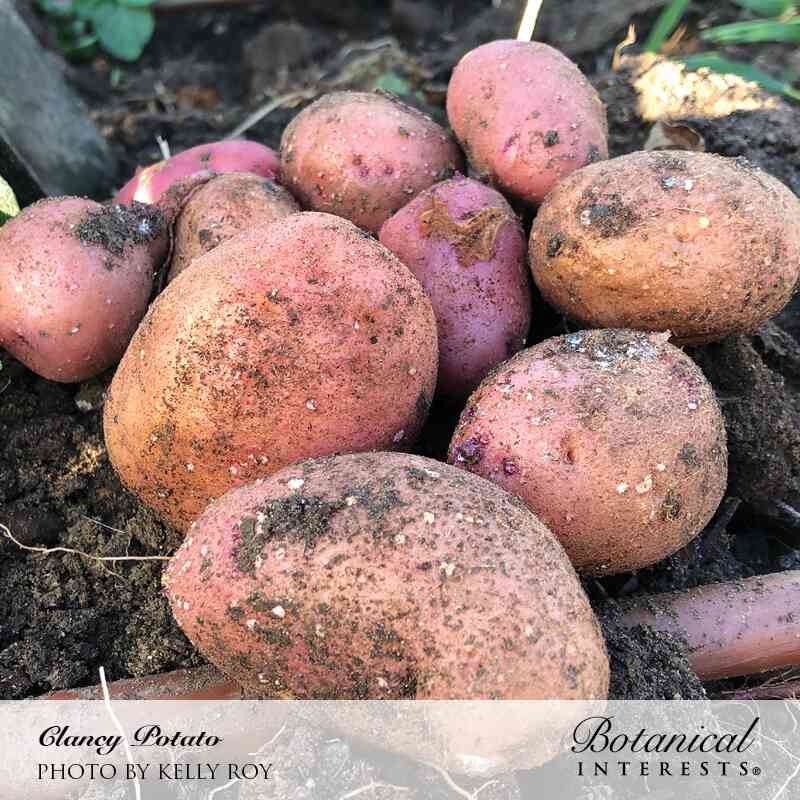



- Variety Info
- Sowing Info
- Growing Info
- Learn More
Variety Info
Days to Maturity: 85 – 110 Days from transplanting
Family: Solanaceae
Native: Unknown; only in cultivation
Hardiness: Annual
Exposure: Full sun
Plant Dimensions: Lush, green foliage 24"–40" tall is followed by pinkish lavender flowers
Variety Info: Clancy' is an ideal "creamer" potato with fine texture, making it very versatile. Potatoes may be round or elongated (fingerling); the skins can be rose blush to red or creamy yellow, some with red spots or dots. 'Clancy' was bred by Peter van Hest; it is the first potato from seed that is an AAS winner. Seeds are sterile which helps prevent diseases from spreading like they can on a tuber.
Attributes: Frost Sensitive, Pelleted

Sowing Info
When to Sow Outside: Not recommended.
When to Start Inside: RECOMMENDED: 4 to 6 weeks before your average last frost date. In mild climates, start seeds in mid-summer for a fall crop. Ideal soil temperature for germination is 60°–70°F.
Days to Emerge: 7 – 14 Days
Seed Depth: ¼"
Seed Spacing: Start indoors
Row Spacing: 3'
Thinning: Start indoors, plant seedlings 12" apart outside
Your hardiness zone is
Growing Info
Harvesting: Use a flat-tine digging fork or shovel, digging widely around the hill to avoid damaging the potatoes. Potatoes may be harvested in stages for a longer harvest period.
FRESH NEW POTATOES: Harvest may begin any time after plants have begun to flower. Potatoes harvested at this stage should be enjoyed as soon as possible, as their soft skins don't allow for long-term storage.
STORAGE POTATOES: Once the foliage has died back or is removed, potato skins toughen which protects them from drying out, extending their storage life. Harvest 2 to 3 weeks after the foliage has died back. If your season is short and foliage has not died back, you can cut the plants down at the soil level three weeks prior to harvesting.
Curing Storage Potatoes: Unwashed potatoes should be cured in a dry, well-ventilated location for 2 to 3 days.
Special Care: Potatoes should have soil hilled around them a few times during the growing season to maximize your harvest. When soil is mounded, or hilled, on the plant stems, it encourages new roots to sprout from the buried stem, and more potatoes will develop on those roots. Hilling also preserves the harvest because if/when potato tubers are exposed to light for long periods of time, they produce chlorophyll and other substances that make them bitter. At least one of these substances, solanine, is toxic to humans in large amounts. HILLING PROCESS: As plants grow, mound soil and/or compost around them a few times during the growing season until you have hilled about 12" of soil around plants. It is a good idea to also mulch the hills to reduce weeds, retain moisture, and help prevent pests. Alternatively, some gardeners plant potatoes in a barrel, grow bag, or similar structure, and add soil and/or compost as plants grow. To harvest, the structure can be opened or tipped over, exposing the potatoes.





